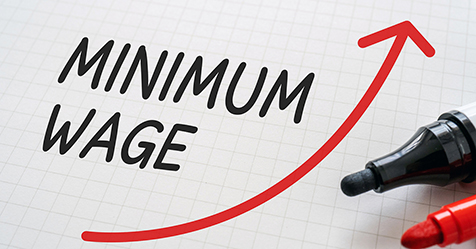Picture this: You and one of your co-workers are exiting a restroom stall at the exact same time.
As usual, you head over to the sink and start lathering up, while your counterpart walks shamelessly toward the door.
 We’ve all been there before; they and others like them are the reason you keep a bottle of hand sanitizer on your desk at all times.
We’ve all been there before; they and others like them are the reason you keep a bottle of hand sanitizer on your desk at all times.
Wash Your Hands, Ladies And Gentlemen
It’s common knowledge that regular handwashing is an essential component to good overall health.
According to the U.S. Centers for Disease Control and Prevention (CDC), proper handwashing with soap and warm water is the single most important means of preventing the spread of both viral and bacterial infections.
A whopping 80 percent of infectious diseases are spread simply through the act of touch.
The funny thing is that humans — well, some of us humans — haven’t always been such germaphobes.
In fact, the lifesaving benefits associated with regular handwashing are a relatively modern discovery.
The Father Of Handwashing: Ignaz Semmelweis
It was in 1847 that Ignaz Semmelweis, a Hungarian physician, first discovered the importance of handwashing after noticing that rates of puerperal fever — a deadly bacterial infection contracted by women during childbirth — in his Vienna hospital were much higher in one ward than the other.
Semmelweis found it puzzling that two wards in the same hospital would have such drastically different mortality rates because they both operated under nearly identical standards.
The only major difference involved the individuals who worked there.
The first clinic was used as a teaching institution for medical students, while the second was staffed by midwives only.
After observing the daily routines of the clinic’s medical students, Semmelweis was able to see the connection: The medical students, who frequently shifted between the autopsy room and the maternity ward — sans handwashing, of course — were transferring infectious substances from corpses to their female patients during childbirth.
From then on, Semmelweis insisted that students and physicians scrub their hands with chlorinated lime between wards and mortality rates dropped dramatically — eventually mirroring those seen in the midwives-only ward.
Like many major discoveries before him, Semmelwies’ theory was ridiculed by colleagues and was not widely accepted by the scientific or medical community at the time.
It would be another 15 years before his results were even published, and another 50 —long after Semmelweis’ death, unfortunately — before handwashing would be a widely accepted preventive measure in the field of medicine.
Most of us know that we should frequently wash our hands, especially after using the restroom.
But, do we?
A variety of independent studies over the years have ventured to find this out, and the answer appears to be: Kind of.
The Results Of A 2012 Handwashing Survey:
- According to an independent handwashing survey of 1,046 American adults conducted in 2012, the majority of Americans (70 percent) claim to wash their hands every single time after using a public restroom, though past observational studies may beg to differ
- Unfortunately, Americans are not washing their hands long enough: Fifty-seven percent of respondents said they washed their hands for five to 15 seconds on average, while the CDC recommends at least 20 seconds
- The same study also asked respondents to estimate how often they saw their restroom counterparts wash their hands; nearly three-quarters of respondents said they frequently or occasionally have seen others leaving the restroom without washing their hands.
With the advent of modern technology, major industries are becoming a little more creative when it comes to encouraging employees to wash their hands.
Several hand hygiene sensor systems have been designed to detect both alcohol and soap residue on employees’ hands.
How Hand Hygiene Sensors Work:
- When an employee enters a patient room, he or she is required to wash up, followed by a quick wave underneath a nearby hand sensor
- The device then essentially “smells” if an employee has washed up properly; a green light on their ID badge signifies a pass
- If an employee fails to properly wash his or her hands, the badge emits a reminder signal
- Every time an employee forgets to wash up, the device alerts an internal database for tracking purposes.
Though many of these systems are still in the testing phase, early research has shown that they do increase handwashing compliance among employees.
Hospitals across the country have purchased these handwashing detection devices to prompt doctors and nurses to wash their hands more frequently before interacting with their patients.
So far, the major drawback of these new systems seems to be that they’re pretty expensive.
Only time will tell if they will eventually become a staple device in the medical industry and, perhaps, someday in the food industry as well.
This is a guest post by Briana Davis on behalf of National Purity, an industry-leading chemical manufacturing company selling environmentally friendly bulk foaming hand soaps


